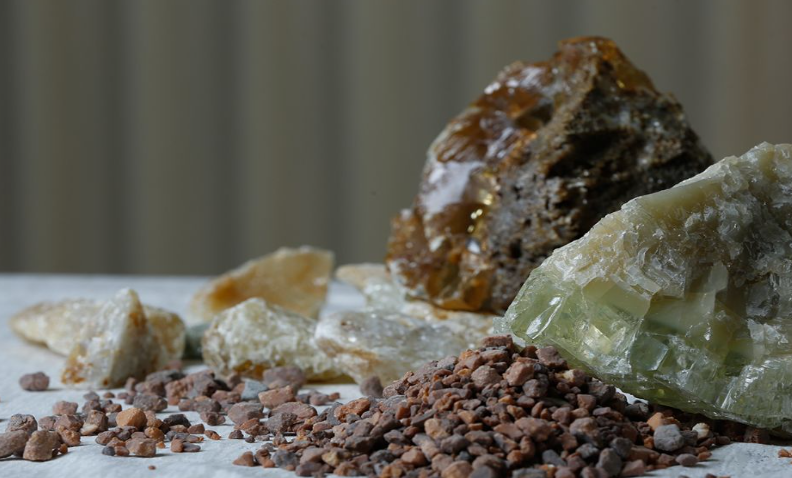Everything You Should Know: Fused Magnesia
Magnesia is a material widely used in many industries, and it has an important role in various applications. One of its most remarkable forms is fused magnesia, which is known for its excellent qualities and widespread use. In this complete article, we will explore the composition of fused magnesia, the way it's manufactured, and its extensive range of applications.
What exactly is fused magnesia?
Fused magnesia, also called electrofused magnesia, is a pure and high-quality material mainly made up of magnesia (MgO). It is created by mixing magnesite (MgCO3), a natural mineral, and heating it to high temperatures.
The end product is fused magnesia, which has exceptional thermal and chemical stability, making it perfect for many industrial applications.
The Composition of Fused Magnesia remains unchanged.
Fused magnesia is very pure, with over 98% MgO. How it's made is important too. Its high purity makes it work better for different uses. This helps the material keep its high quality. Fused magnesia can have some other substances like calcium oxide (CaO), silicon dioxide (SiO2), or iron oxide (Fe2O3), but only in small amounts. This helps the material keep its high quality.

The making of fused magnesia has several necessary stages. Here's a closer look at how it's done:
Picking Raw Materials: The process starts by selecting superior magnesite, which is the primary material used. It's preferred to use magnesite with few impurities to guarantee the final product's purity and reliability.
Heating: The chosen magnesite is heated in a controlled environment, which is known as calcination, to extract its moisture and carbon dioxide. This process results in a more concentrated magnesia. After calcination, the magnesite is fused at incredibly high temperatures, usually over 2,800 degrees Celsius, in electric arc furnaces, known as fusion. This high temperature melts the magnesite to create a molten mass. Lastly, the molten mass is cooled and solidified. The melted magnesia is cooled down in a careful manner until it turns solid. Finally, the quality is checked to maintain consistent standards. This process affects the crystal structure of the fused magnesia, which ultimately affects its properties. The next step involves crushing and sizing of the solidified fused magnesia particles into different sizes, suitable for various industries. This ensures that a range of fused magnesia grades is readily available for different purposes. Throughout the manufacturing process, strict quality control measures are used to maintain the desired composition and physical properties of the fused magnesia. Advanced analysis techniques and testing procedures are used to ensure consistent quality and purity.
Applications of Fused Magnesia
Fused magnesia is widely used in different industries due to its exceptional properties.
Refractories
Fused magnesia is a critical ingredient in refractory materials. It is used in several applications, such as Refractories Fused magnesia is a critical ingredient in refractory materials. Refractories fused magnesia is a critical ingredient in refractory materials. These materials are extensively utilized in high-temperature settings. Its great ability to resist high temperatures, corrosion, and thermal shock makes it a top choice for lining furnaces, kilns, and other equipment used in industries like steel, cement, and glass manufacturing.
Steel and Metallurgical Industries
The steel and metallurgical industries rely heavily on fused magnesia for numerous applications. Fused magnesia is used to make refractory bricks, ladle linings, and crucibles that protect against extreme conditions during metal melting, casting, and refining processes.
Electrical Industry
It's also used in the electrical industry to manufacture electrical insulation materials. Its high electrical resistance and ability to withstand high temperatures make it an excellent option for insulation components in electric heating elements, like those utilized in industrial heating systems and electric furnaces.
Chemical Industry
The chemical industry also relies on fused magnesia due to its resistance to chemical corrosion. It is utilized to line reaction vessels, storage tanks, and chimneys, protecting against the corrosive effects of acids, alkalis, and other reactive chemicals.
Other Applications
Fused magnesia has diverse uses outside the aforementioned industries. It is employed in manufacturing ceramics, abrasives, grinding wheels, and specialized coatings. Due to its versatility and excellent properties, it is a valuable material for a broad range of applications.
Conclusion
Overall, fused magnesia is a high-purity refractory material mainly composed of magnesia. Its unique blend, production method, and adaptable uses have made it a valued substance in many different fields.
541
0
0


Comments
All Comments (0)